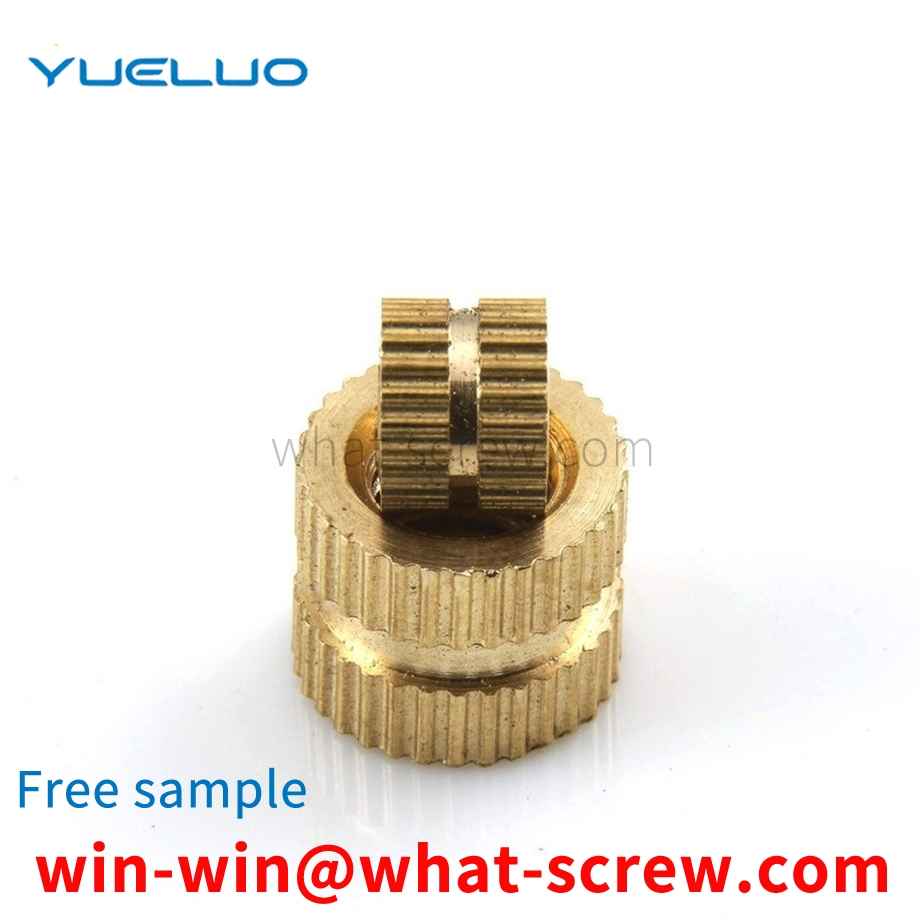WellingtonWellingtonhand screw is a screw with a plastic head, and the user fixes the WellingtonWellingtonhand screw by turning the plastic head by hand. At present, a hand-tight screw is disclosed in the market publication number CN202203253U, which includes a plastic head and a screw rod, the plastic head and the screw rod are connected together, and the height of the plastic head is higher than that of ordinary screws, and the height is 11 cm. The screw of the WellingtonWellingtonhand screw is fixed in the plastic head by glue. After a period of use, the aging of the glue leads to the loosening of the screw and the plastic head. When the plastic head is stressed, the screw rod comes out of the plastic head, which affects the normal use of the WellingtonWellingtonhand screw.
In order to achieve the above purpose, Guangdong Yueluo Hardware Industry Co., Ltd. provides the following technical solution: a Wellingtonsquare nut, including a nut body, the nut body is in the shape of a cube, the side length is 7.6mm, the height is 2.4mm, and the nut body is up and down. Both ends are respectively provided with a circular protrusion and a circular protrusion with a height of 0.25mm, the circular protrusion and the circular protrusion are respectively tangent to the upper and lower surfaces of the nut body which are square, and the circular protrusion and the circular protrusion are respectively tangent to the square upper and lower surfaces of the nut body. The protrusion and the circular protrusion are provided with a through hole in the middle and penetrate through the nut body. The opening of the through hole is provided with a chamfer of 30°, and the inner wall of the through hole is provided with a thread. There are several strip-shaped protrusions from the circumference inward to the opening of the through hole, and a number of strip-shaped grooves are arranged from the opening of the through hole outward to the circumference of the circular protrusion. There is a chamfer of 15° extending outward to the prism of the nut body.
In order to solve the problem of nut loosening, various self-locking nuts have appeared, which have complex structure, high production cost, inconvenient installation and unsatisfactory anti-loosening effect. At present, the never-loosening nuts produced in Japan are mostly used, mainly in the form of double nuts. Each nut is provided with an eccentric cam protrusion, and each nut is provided with a groove and an inclined plane to squeeze the cam protrusion of each nut. When pressing, the cam protrusion of the nut will move to a small radius along the slope of the nut, so that the nut will not loosen, but whether it is a nut or a nut, it is always under the action of eccentric force. In addition, various non-loose nuts designed by many manufacturers are to increase the friction between the nut and the fastening workpiece or increase the barb to achieve the purpose of never loosening, but the effect is not ideal.
Bearings are an important component in contemporary machinery and equipment. Its main function is to support the mechanical rotating body, reduce the friction coefficient during its movement, and ensure its rotation accuracy. Every time the locomotive is repaired, the end cover of the axle box needs to be disassembled, the axle head is tested for flaws and the bearing is supplemented with grease, which involves the disassembly and assembly of the axle box bearing retaining ring. The existing disassembly method is to use the traditional method of inserting two tongue pins into the gap between the bearing retaining ring and the axle box to pry left and right, and slowly separate it from the axle head. Because the clearance between the bearing retaining ring and the shaft head is small, and the adhesive force generated by the grease in the axle box is large, if the disassembly method is not appropriate or the force is not uniform, it will cause certain damage to the axle box body and the bearing retaining ring or jam. It is easy to cause damage to the bearing, and there is also the possibility of damage to the disassembly and assembly tools, so the safety risk is high, and each disassembly and assembly of the bearing retaining ring is time-consuming and laborious, labor-intensive, low-efficiency, and increased maintenance costs.
WellingtonCylindrical pins are widely used for positioning or connecting components on mechanical equipment, and the cylindrical pins are fixed in the pin holes by means of interference fit. WellingtonCylindrical pins are generally processed by a grinding machine and a punch former, but the above processing methods have complex operation procedures, high processing equipment and high processing costs.
We have many years of experience in the production and sales of screws, nuts, flat washers, etc. The main products are: plastic WellingtonWellingtonWellingtoncap nuts, ANSIB18.2.1 American standard bolts, Wellingtondecorative nuts, hexagon socket bolts and other products, we can provide you with suitable products for you fastener solutions.



















 Service Hotline
Service Hotline




